Orangepi 5 cluster
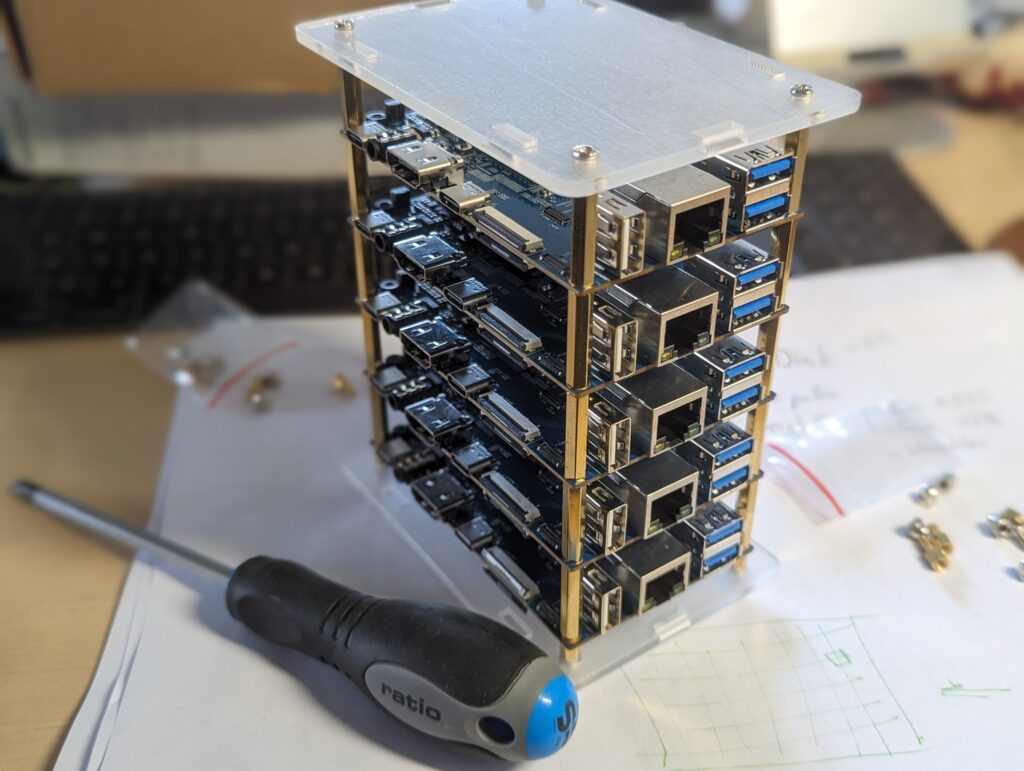
I made a cluster, mini HPC, with some OrangePi 5 SBCs (Single Board Computers).
Reasons
A cluster of single board computers can be beneficial for a variety of reasons, depending on your specific needs and use cases:
- Increased Computational Power: By combining multiple single board computers in a cluster, you can achieve greater computational power than a single board can provide. This can be particularly useful for tasks that require intensive processing, such as data analysis, simulations, rendering, or AI/ML applications.
- Parallel Processing: Clustering allows you to divide tasks into smaller sub-tasks that can be processed in parallel by different boards simultaneously. This can significantly speed up the overall processing time for certain types of workloads.
- High Availability: Clustering provides redundancy, ensuring that if one board fails, the others can continue to work, thus increasing overall system reliability and availability.
- Scalability: As your computing needs grow, it’s often easier and more cost-effective to scale by adding more single board computers to the cluster rather than investing in a single, expensive high-end computer.
- Distributed Computing: Certain applications or algorithms are better suited for distributed computing, where multiple computers work together to solve complex problems or handle large datasets. Clusters enable such distributed computing environments.
- Load Balancing: Clusters can be configured to distribute workloads evenly among the boards, preventing any one board from becoming overwhelmed while others remain idle.
- Customization: Clusters allow you to create a customized computing environment tailored to your specific needs, whereas off-the-shelf high-end computers may not offer the same level of customization.
- Energy Efficiency: For certain workloads, a cluster of low-power single board computers might consume less energy than a single high-powered computer doing the same tasks, leading to cost savings and reduced environmental impact.
- Learning and Experimentation: Clusters provide a valuable learning platform for those interested in distributed computing, parallel processing, and other related technologies.
- Affordability: Single board computers are generally more affordable than high-end desktop or server-grade computers. Clustering these low-cost boards can provide cost-effective computing solutions for specific tasks.
- Data safety: Data safety is crucial for sensitive data, but using Cloud Services may not comply with local regulations. Processing locally with a scalable solution might be a good alternative.
Building
I started by ordering five OrangePi 5 and the cheapest cases I could find.
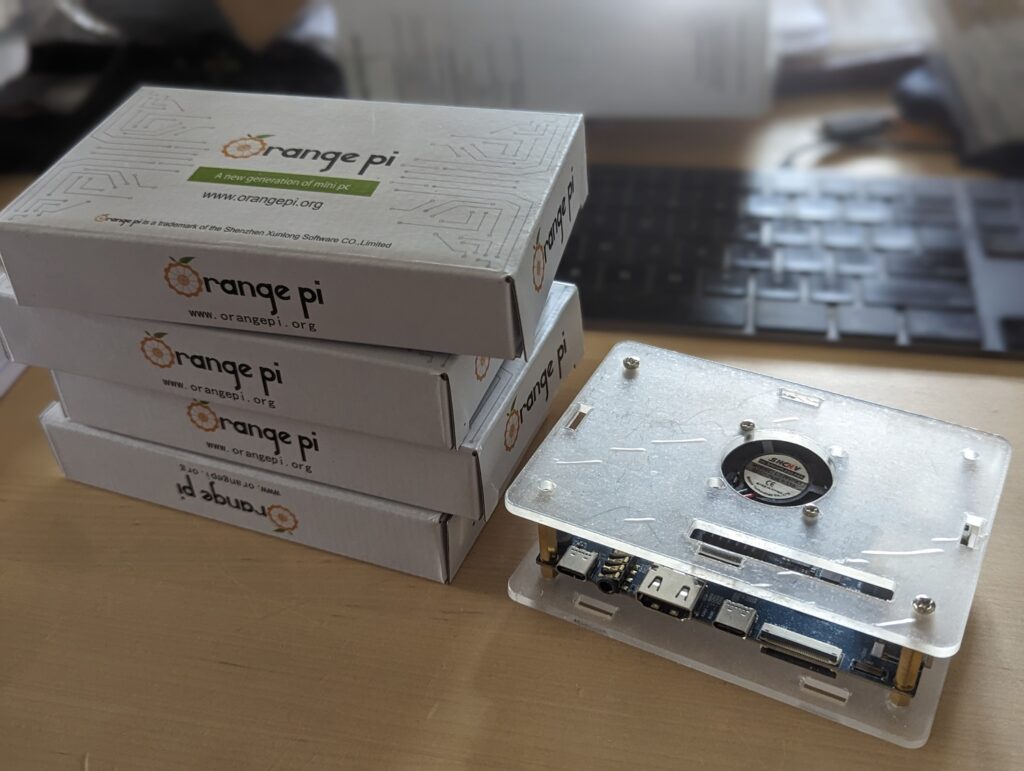
I asked for a M.2 2230 NVME SSD, 256GB, for each of them.
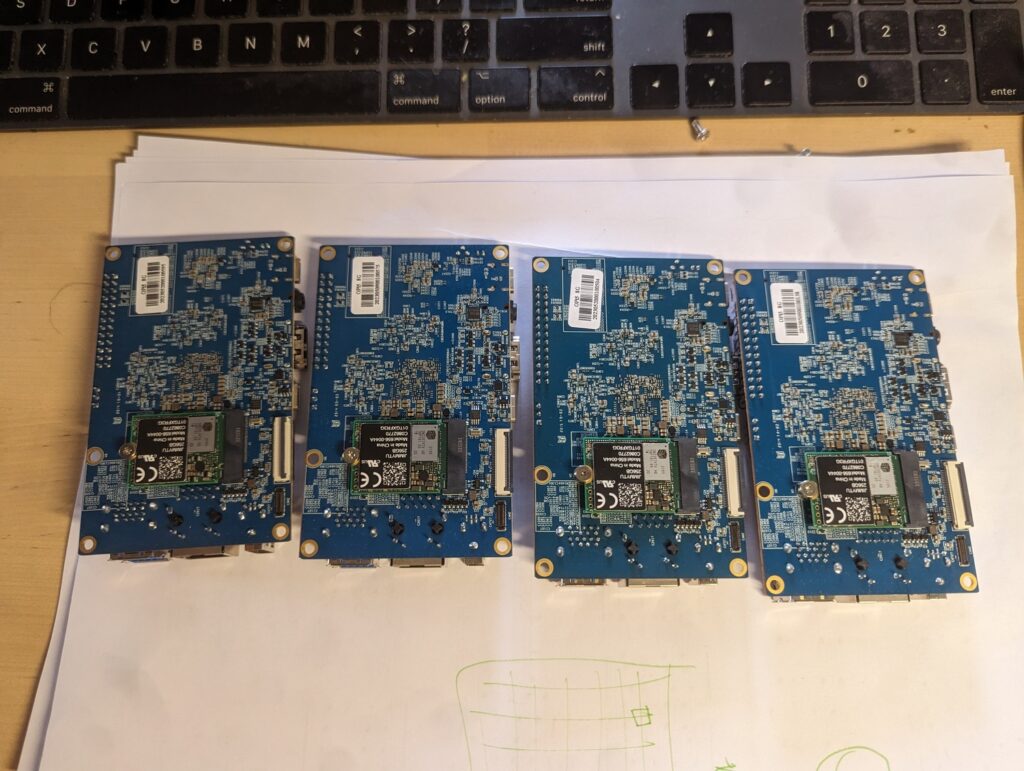
I wanted to be able to pile up boards to have a small footprint.

Keeping the sides open make it for a better thermal dissipation.
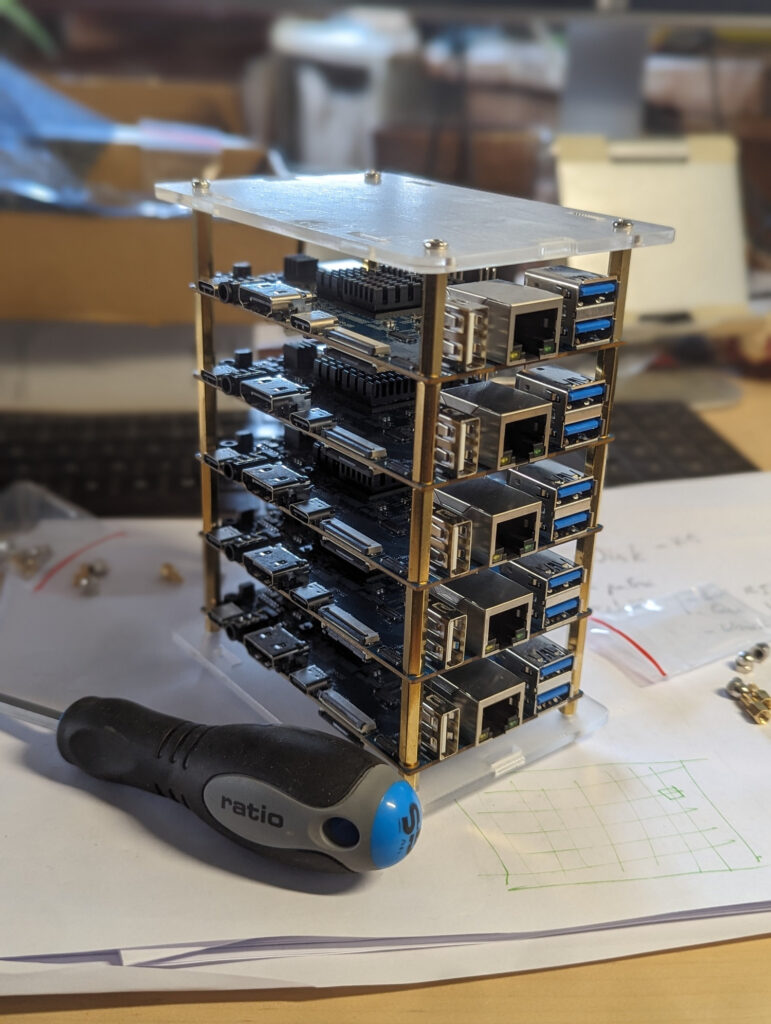
Like that it looks quite pretty to me.
Less pretty once I added the network switch, the USB station, the fan and the cables.
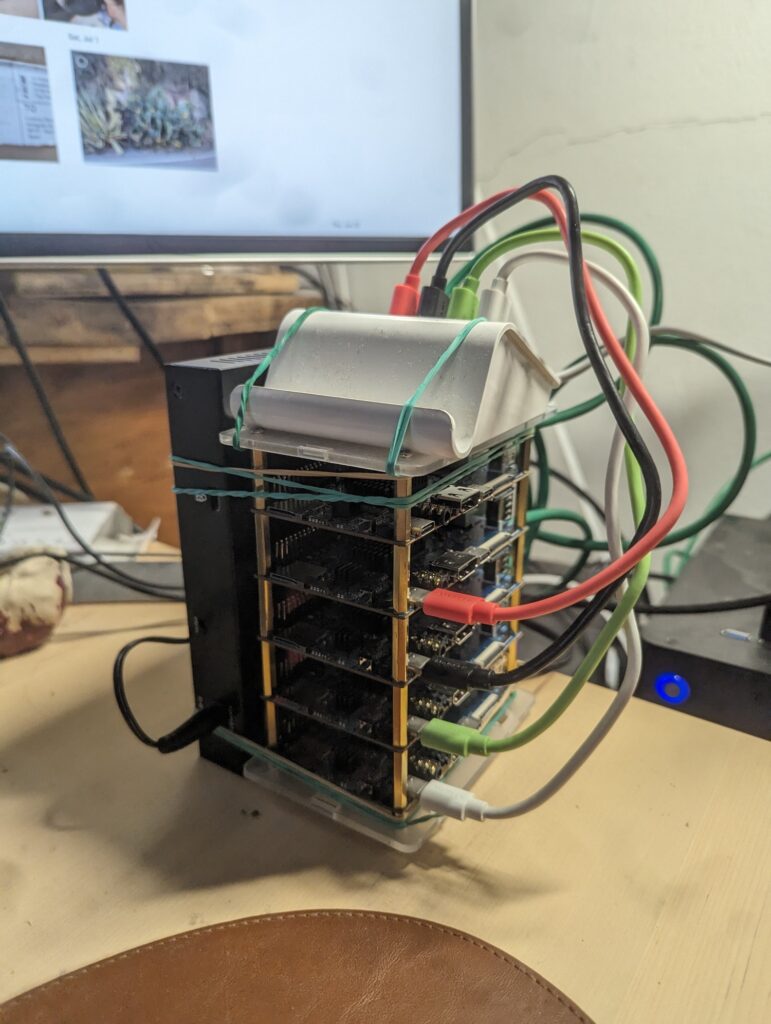
I actually realized the I needed a better USB station because this one wasn’t offering enough power and the units would halt randomly.
Also I thought I would try to add an external USB fan to test several configuration with fan speed and energy consumption.
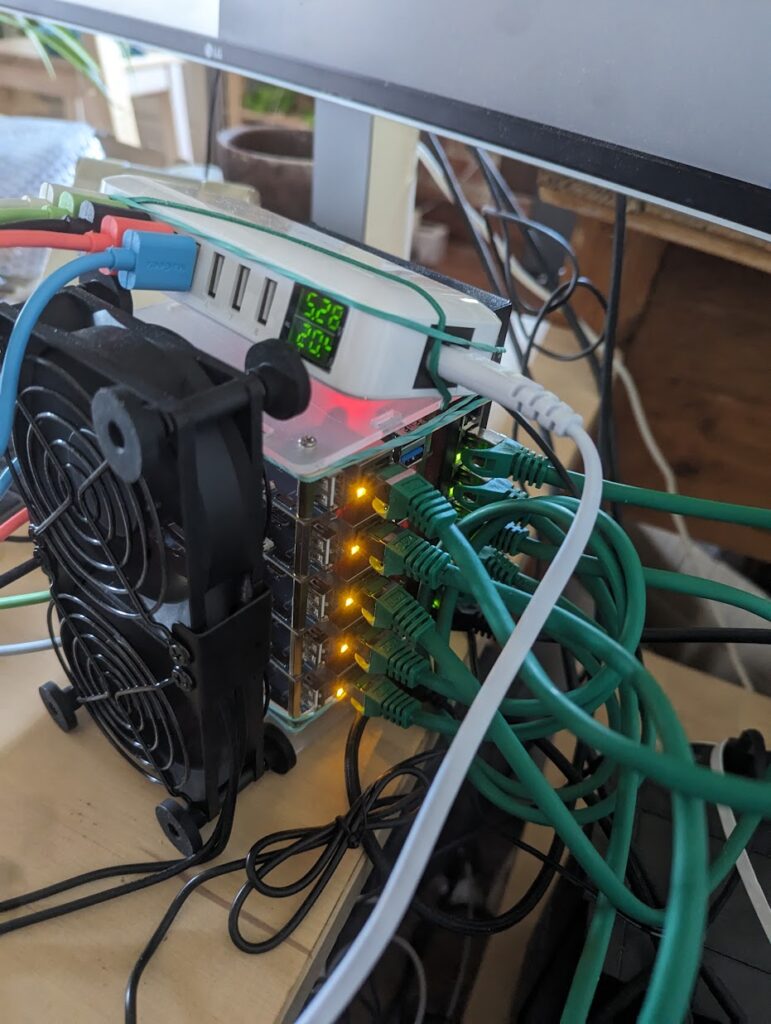
I know the rubber bands are everything but elegant.
I’ll stick to that for the moment. I might add more boards in the near future and I still don’t know the final size of it.
Specifications
Orange Pi 5
- Processor: Rockchip RK3588S 8-core 64-bit processor
- Ram: 8GB (LPDDR4/4x)
- Lan: Gigabit port
- Disk: M.2 NVME 2230 SSD 256GB
- OS: Debian 11 server
Costs
I tried to keep the prices as low as possible.
Buying the OrangePIs one by one made the price fluctuate on Ali Express, supposedly by the conversion between Yuan and Euros.
- OrangePIs 5: 541.90 Euros
- NVME Disks: 128.27 Euros
- Cases: 28.24 Euros
- USB station: 23.79 Euros
- Switch: 36.05 Euros
- USB Fan: 26.99 Euros
- USB cables: 9.99 Euros
- RJ45 cables: 19.88 Euros
- Sim-card: 6.90 Euros
- M.2 screw set: 12.77 Euros
The total cost of the hardware: 834.78 Euros
Conclusions
Planning and assembling the cluster was technically easy.
The most challenging part was waiting for things to get delivered after ordering on Ali Express.